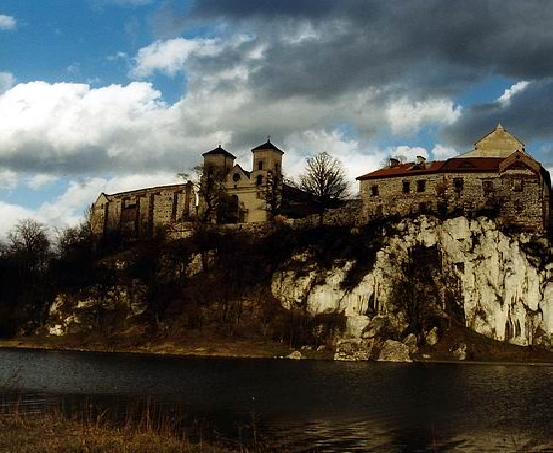Title of Product:
The Monastery of Tyniec
Country:
 Poland
Poland
Century: 1400 - The 15th Century
Topic: The Monastery of Tyniec
Image of the product:

Name of Author(s): Janusz Bogdanowski
Name of Producer: Net periodic: “www.zamki.pl”
Language/s of Product: Polish
Target Group: General audience
Overall Evaluation: excellent
Availability of community:
Newsgroup
Objectives & Structure:
Aspects to consider:
- The Website gives a possibility of following the history of the locations and the consequent conversions within it
- Students can analyze the functions of the object and the architectural conceptions of the functions’ adaptation
- The monastery as the responsible property, the object’s compound and versatile notion through history
- Possibility of constructing a timeline throughout the historical epochs on the basis of the location’s changes
Description of contents:
In the Ancient Times, there had existed here a hamlet, in which the local inhabitants used to hide At the moments of danger. In 1044 King Kazimierz Odnowiciel brought the Benedictines to Tyniec, and soon after they erected there the first bricked elements- the Roman Style church and the monastery buildings with a not too big arcade garden located in the internal patio. Since 1247 the military notion of the monastery had increased, because it appeared to be a fortress situated by the border. At that time the monastery was surrounded by the wall with the bastilles. The monastery had to go through the Mongolian invasion and later the destroying by the armies of the Bishop Jan Muskata.
In XIV century, the place possessed the defence tower and the building of the local authority, and the entrance was possible by means of two gates. However, when in XV century the Polish border was directed further south- west, the monastery stopped to be an important fortress any longer.
In keeping with the above, the building which was before used by the Royal Staff, then was given to the property of the monks, and the living rooms for the friars were adapted there.
The monastery suffered much from the Swedish Wars, and in XVII century at the bottom of the monastery mountain there were erected the defence walls with bastilles, which were later modernized on the basis of bastions.
The close neighbourhood with Cracow made the monastery could be used by the armies during the XVIII century patriotic confederation. During the building proceedings since 1769 the Monastery of Tyniec became a strong bastion- like fortress, many times under attacks of the hostile armies
In 1831 the monastery suffered from a big fire, after which there stopped to use it as a fortress. Only in the between wars period, the Benedictines who had come back renovated it almost completely.
Evaluation and Comments:
Overall Evaluation: excellent
Clarity of structure, logical sequence of contents: excellent
Usability / easiness of navigation: excellent
The website is interesting / stimulating: excellent
Educational and learning value: excellent
Quality and relevancy of content: excellent
Compatibility of the content with the target group: excellent
Suitability and quality of graphic interface: excellent
Degree and quality of interaction: excellent
Exploitation of the electronic potential: excellent
Availability and quality of simulation exercises: excellent
Quality of the evaluation tools: excellent
Possibility of printing/saving material or tests: excellent
Description of how the website can be used with the students::
- The website gives the refreshed site of the object in various context, each of which worth analyzing.
Comments::
- The identity of time, history, needs and aspirations is very well construed and explored.
Evaluation Date: 01.09.2008.
Name of teacher: MIchał Seroczyński
Name of School: CKU Sopot
Country: Poland
Subjects Taught: Fine Arts
Comments about this product

 Poland
Poland